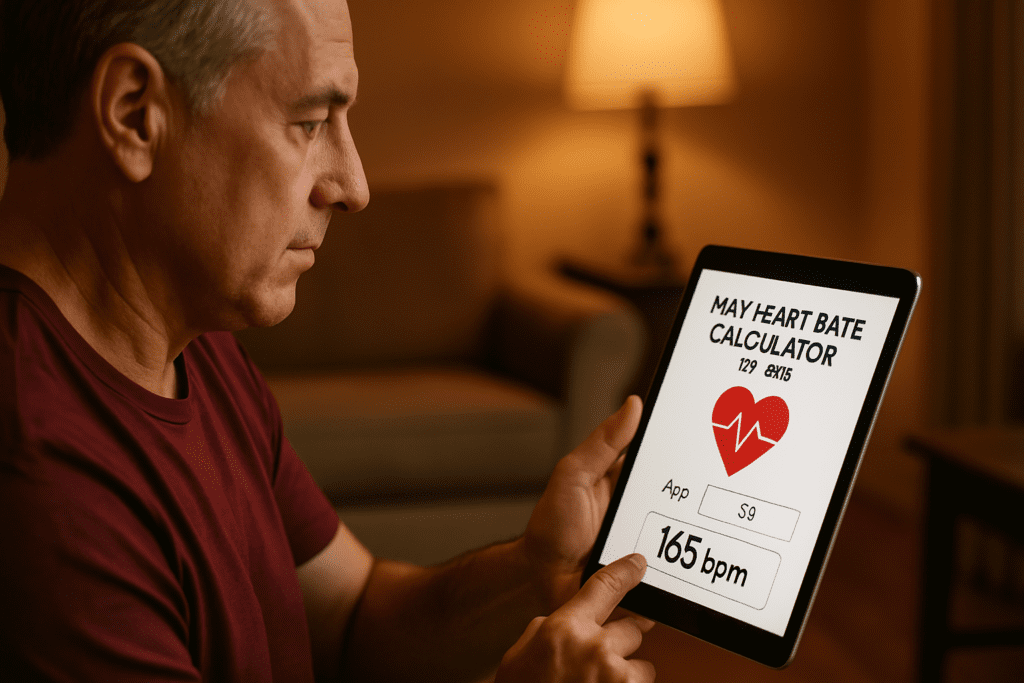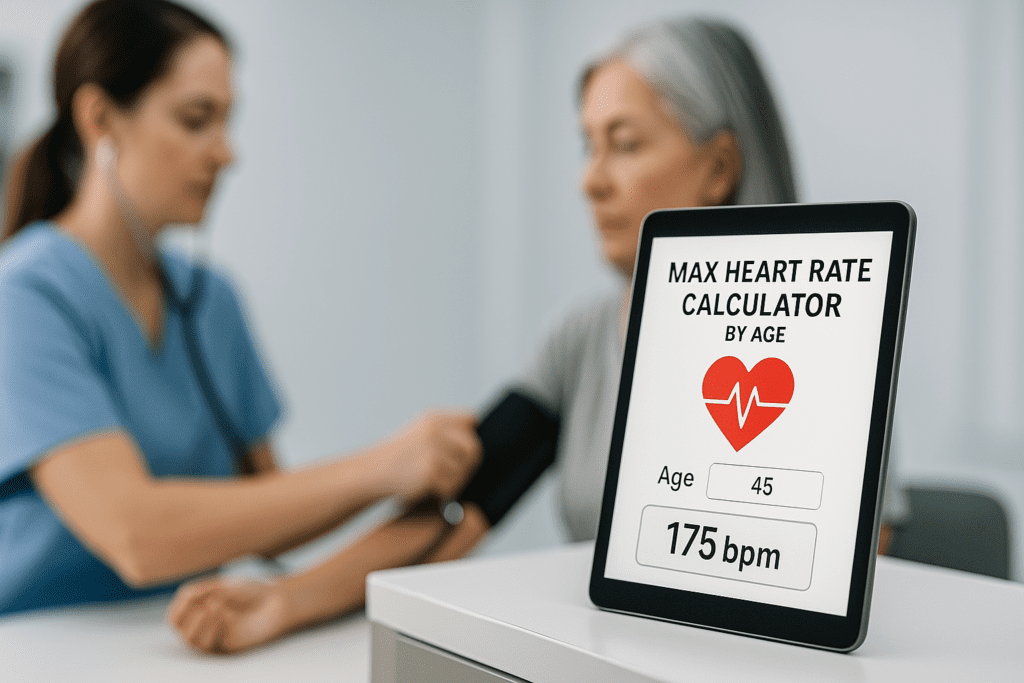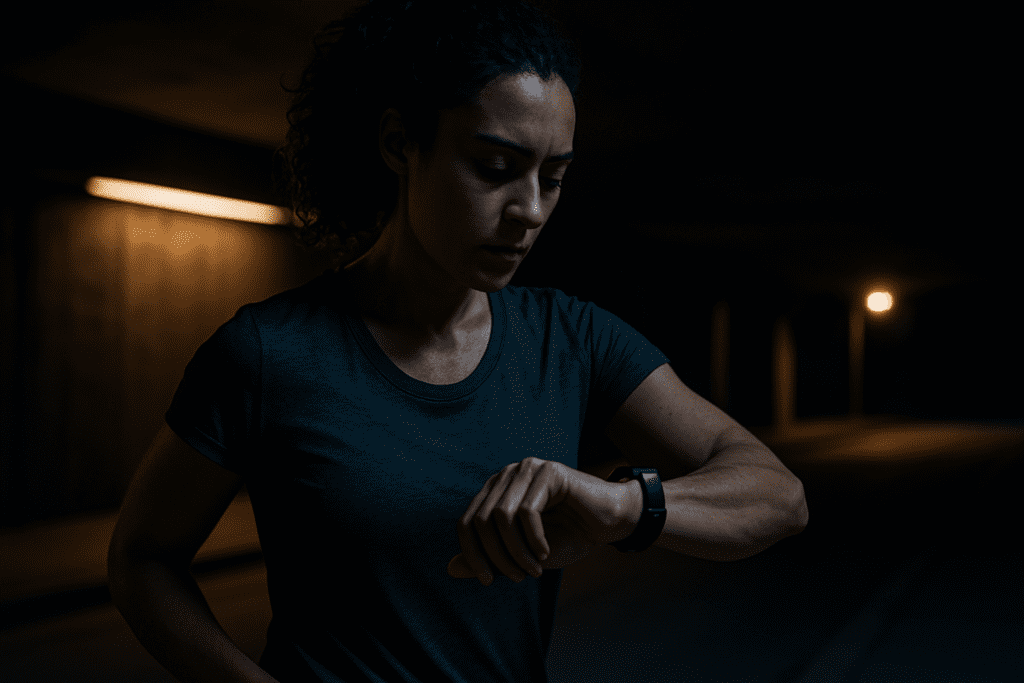Understanding the Role of Maximum Heart Rate in Cardiovascular Health
Your heart is more than a muscle; it is the core of your cardiovascular system, and how efficiently it works during exercise is a vital indicator of your overall health. When it comes to training safely and effectively, knowing your maximum heart rate (often abbreviated as max HR) offers a crucial benchmark. It helps define the upper limit of what your cardiovascular system can handle during physical exertion. More importantly, it lays the groundwork for creating targeted, safe, and efficient workouts that support both heart health and athletic performance.
You may also like: Top Cardiologist-Approved Cardio Workouts to Improve Cardiovascular Fitness and Heart Health Naturally
The concept of maximum heart rate isn’t just a tool for elite athletes. It’s a guiding metric for anyone engaging in cardiovascular activity, especially those with heart-related health concerns. Whether you’re recovering from a cardiac event or beginning a new fitness journey, understanding how to find your maximum heart rate safely can make a significant difference. Using a maximum heart rate calculator by age is one of the most reliable and accessible methods to begin.
For decades, researchers and cardiologists have emphasized that heart rate is not a one-size-fits-all number. Individual factors such as age, fitness level, and even medication use can influence your heart rate response to exercise. That’s why the development and use of tools like the heart rate calculator, target heart rate calculator, and heart zone calculator have become essential for precision training and personalized care. These tools not only estimate your upper heart rate limits but also help determine your optimal training zones for fat burning, endurance, and cardiovascular strengthening.
Why Accurate Heart Rate Estimation Matters for Safe Training
Determining your maximum heart rate is about more than just numbers—it’s about safety, efficiency, and avoiding potential health risks. Cardiologists often use the maximum heart rate formula as a baseline to recommend safe exercise limits, particularly for individuals with pre-existing cardiovascular conditions. A mistake in estimating this value can lead to overtraining, dangerous spikes in blood pressure, or even cardiac events in vulnerable populations.
The traditional max HR formula—220 minus your age—is still widely used. However, it’s important to recognize that this equation was developed through population averages and doesn’t account for individual variability. That’s where a maximum heart rate calculator age tool can offer a more customized approach. Some calculators also consider weight and gender, which helps to refine accuracy and personalize risk assessment. In these cases, a maximum heart rate calculator age weight combination can be particularly helpful.
When used appropriately, these tools can help individuals avoid excessive strain on the heart while ensuring they’re training within a range that stimulates cardiovascular improvement. For people living with conditions like hypertension, atrial fibrillation, or coronary artery disease, precision becomes even more important. Staying within the appropriate heart rate zones ensures the heart gets a beneficial workout without triggering dangerous responses.
How to Find Max Heart Rate Using Modern Tools and Science
Figuring out your maximum heart rate begins with understanding the available tools. As mentioned, the maximum HR calculator or heart rate calculator often starts with age-based formulas. While “220 minus age” is a general guide, more refined options are gaining popularity. For instance, some fitness experts recommend formulas like “208 – (0.7 × age)” or the Tanaka method, which may offer improved accuracy for older adults.
Still, formulas alone are not always sufficient. That’s why the best approach often involves combining a maximum heart rate calculator by age with observational data. Monitoring your heart rate during high-intensity exercise and comparing it with your estimated max HR can reveal important discrepancies. This can be particularly useful for endurance athletes, cardiac rehab patients, and those using wearable technology.
Devices like smartwatches and fitness trackers have added another layer of insight. Many of these gadgets feature a target heart rate calculator or even a finding maximum heart rate calculator built into their user interface. These not only track real-time heart rate data but also log trends over time, helping users monitor progress and adjust their training accordingly. This intersection of technology and cardiovascular health is changing how we approach exercise, particularly in clinical settings where tailored interventions are vital.

The Role of Heart Rate Zones and the Heart Rate Reserve Formula
Understanding your max HR is the first step. The next step involves using that information to create specific training zones that align with your goals and medical needs. This is where the heart zone calculator and heart rate reserve formula come into play. Rather than focusing solely on the upper limit, these tools help you define the full spectrum of exercise intensity levels—ranging from light aerobic activity to high-intensity interval training.
The heart rate reserve formula is calculated by subtracting your resting heart rate from your max HR. This number is then used to define intensity percentages for different training goals. For example, exercising at 50–60% of your heart rate reserve targets fat metabolism, while 70–85% may focus on improving cardiovascular endurance. When paired with a cardiac frequency calculator, this method becomes a powerful tool for tailoring workouts in both fitness and rehabilitation settings.
By using a heart rate calculator to guide these zones, you avoid the guesswork of training too hard—or not hard enough. This is particularly useful for older adults, whose target zones may be lower than those of younger individuals but still provide substantial health benefits. When your training aligns with data from a maximum heart rate calculator age, your workouts become more intelligent, safe, and purposeful.
Age-Related Changes in Heart Rate and Why They Matter
Age has a profound effect on your cardiovascular system, and understanding these changes is key to interpreting your heart rate data accurately. As we age, the responsiveness of the heart to exercise tends to decline. This means that your max HR naturally decreases over time, which is why any reliable max heart rate equation must factor age into its calculation.
Using a maximum heart rate calculator by age takes this into account and ensures that expectations are aligned with physiological reality. For instance, a 25-year-old might have a max HR of around 195, while a 65-year-old’s might be closer to 155. Training with the wrong max HR estimate can lead to either overtraining or undertraining, both of which limit progress and may even compromise safety.
This is particularly important for those managing chronic conditions. A 70-year-old individual with hypertension, for instance, must use a how to determine maximum heart rate approach that respects both age and medical status. Failing to do so may inadvertently place stress on the heart, especially if medications like beta blockers are in play. In such cases, a maximum heart rate calculator age weight approach—factoring in additional metrics—can offer better guidance.
Understanding these age-related shifts also reinforces the need for periodic reassessment. What was an effective heart rate target five years ago may no longer be appropriate. By regularly revisiting your target heart rate calculator or maximum HR calculator, you can adjust your training to match your current health status and maintain exercise safety over time.
How to Compute Maximum Heart Rate in Clinical and Fitness Settings
Whether you’re a patient undergoing cardiac rehab or an athlete training for a marathon, knowing how to compute your max HR can transform your approach to cardiovascular activity. Clinical practitioners often rely on maximum heart rate formula methods as a starting point but also use stress tests and exercise tolerance evaluations for a more accurate picture.
In medically supervised environments, such as hospitals or cardiac rehab centers, professionals may conduct graded exercise tests to find an individual’s actual peak heart rate. These sessions are monitored with EKGs and blood pressure cuffs, ensuring safety while determining a precise maximum. This approach is far more reliable than basic how do you figure max heart rate strategies that use general formulas without medical oversight.
However, in everyday fitness settings, a combination of tech-enabled tools and calculators still serves as a valuable alternative. Many gym-goers now use apps or online platforms offering a finding maximum heart rate calculator that incorporates data like age, resting HR, and fitness level. Some versions even use algorithms that track trends in your workouts to make ongoing adjustments to your maximum HR estimate.
Ultimately, the goal is to match the precision of clinical assessments with the convenience of at-home tools. This makes heart rate calculators an essential part of both professional healthcare and personal wellness strategies. Regardless of your setting, taking time to accurately compute your max HR offers long-term benefits in safety, stamina, and cardiovascular protection.
Tailoring Your Workouts Using a Target Heart Rate Calculator
Once you have a solid understanding of your maximum heart rate, the next step is translating that knowledge into effective action. This is where a target heart rate calculator becomes particularly useful. Rather than simply chasing your max HR, training within specific target zones allows for progressive adaptation without unnecessary strain.
For individuals aiming to improve endurance, moderate intensity workouts within 50–70% of max HR are usually recommended. On the other hand, high-intensity interval training (HIIT) may push you closer to 85–90% of your max HR. This range is ideal for improving peak performance but must be approached cautiously—especially for those using a maximum heart rate calculator by age to stay within medically safe limits.
Another advantage of using a heart zone calculator is the ability to customize workouts based on daily readiness. For example, if you’re fatigued, underhydrated, or dealing with mild illness, your heart rate may climb more quickly than usual. A calculator that integrates real-time biometrics can alert you when you’re pushing too hard. In this way, tools like a cardiac frequency calculator are not just about goal-setting—they’re also about real-time safety monitoring.
These calculators often come with built-in guidance features, such as alerts when you leave your target zone or suggestions on how to modify intensity. This data-driven approach helps demystify cardiovascular training and makes it more accessible for people at every fitness level. When used alongside a how to find max heart rate method rooted in science, these tools empower smarter, more sustainable workouts.

How to Determine Maximum Heart Rate While Managing Medical Conditions
For people with cardiovascular disease, diabetes, or other chronic conditions, knowing how to determine maximum heart rate safely becomes even more critical. Certain medications, such as beta blockers or calcium channel blockers, can significantly alter your heart rate response to exercise. This means that a standard max heart rate equation may not apply.
In such cases, cardiologists often recommend using modified formulas or supervised stress testing. Another alternative is using perceived exertion scales alongside a maximum HR calculator to gauge effort more effectively. For instance, if your heart rate doesn’t climb as expected due to medication, how hard the exercise feels can still be a useful indicator. This strategy, paired with a maximum heart rate calculator age, offers a dual-layered method for staying safe while training effectively.
Additionally, those recovering from events such as myocardial infarction may begin with light intensity training guided by lower percentages of heart rate reserve. Using the heart rate reserve formula in combination with real-time monitoring ensures gradual progress while minimizing the risk of overexertion. These individuals often benefit from using a maximum heart rate calculator age weight tool, which integrates multiple health variables for added precision.
It’s also important to have regular consultations with healthcare providers to reassess exercise targets over time. As medication dosages, energy levels, or health status change, so too should your cardiovascular training plan. Integrating up-to-date data from a heart rate calculator into your clinical care ensures that your fitness efforts are both beneficial and safe.
Frequently Asked Questions: Understanding Maximum Heart Rate and Safe Cardiovascular Training
1. Can stress or anxiety affect the accuracy of a maximum heart rate calculator?
Yes, emotional states like stress or anxiety can elevate your heart rate independently of physical exertion, which may skew data collected during workouts. When using a maximum heart rate calculator, it’s important to ensure your body is in a relatively calm, baseline state before testing or calculating. Elevated cortisol levels can increase your resting heart rate, thereby influencing your perceived effort during exercise. This is particularly important when relying on a heart rate calculator or maximum heart rate calculator by age, as these tools assume normal physiological conditions. For more accurate results, it’s best to evaluate heart rate metrics on a low-stress day and avoid using emotionally heightened episodes as the basis for a max HR estimate.
2. How do wearable devices compare with clinical methods for determining maximum heart rate?
Wearable technology has advanced significantly, and many modern devices provide fairly accurate real-time heart rate readings. However, they still have limitations compared to clinical assessments involving ECG monitoring and supervised exercise testing. While a smartwatch may offer a finding maximum heart rate calculator feature, it might be less precise under conditions like rapid arm movement or poor skin contact. In contrast, lab-based assessments using the max HR formula often involve controlled protocols that minimize external variability. Still, when wearables are calibrated and used consistently, they offer convenient and valuable tools for long-term maximum HR calculator tracking, especially when paired with a target heart rate calculator to guide workouts.
3. Are there gender differences in how to compute maximum heart rate?
Yes, gender can influence cardiovascular physiology, and some research suggests that women may have slightly different max HR patterns than men, particularly post-menopause. While the basic maximum heart rate formula is often applied universally, more nuanced calculations may use separate coefficients for men and women. A maximum heart rate calculator age weight model may include gender-specific adjustments to enhance accuracy. Some experts advocate for integrating gender into the heart rate reserve formula, particularly in performance training or clinical risk stratification. However, since gendered formulas are still being refined, it’s best to use a cardiac frequency calculator that accounts for individual variations alongside gender as a secondary factor.
4. What role does fitness level play in how to determine maximum heart rate?
Fitness level doesn’t directly change your maximum heart rate, but it does impact how efficiently your heart performs at various intensities. A highly conditioned athlete may reach their max HR estimate more slowly than someone sedentary, even if their max heart rate equation results are similar. For these individuals, relying solely on the maximum heart rate calculator by age may underestimate their potential, as their cardiovascular system is more resilient. A more effective approach may combine a heart zone calculator with actual performance metrics collected over time. Using a target heart rate calculator based on empirical training data allows more tailored prescriptions that better reflect one’s true cardiovascular capacity.
5. Is there an ideal time of day to use a heart rate calculator for accurate readings?
Timing can significantly influence heart rate, with lower values typically recorded in the early morning and higher values in the afternoon due to circadian rhythms. To maximize accuracy when using a heart rate calculator or maximum heart rate calculator, it’s recommended to perform assessments at a consistent time—preferably during late morning or early afternoon when your body is fully awake and hydrated. If you’re using a target heart rate calculator for exercise planning, aligning your sessions with these peak periods can provide more stable data. When evaluating how to determine max heart rate, consistency in testing conditions matters more than the exact hour of the day, but avoiding early mornings or late evenings can help avoid anomalies.
6. Can a heart zone calculator be used to optimize recovery after illness or injury?
Absolutely. A heart zone calculator becomes especially valuable during post-illness or injury recovery, as it allows individuals to reintroduce exercise gradually while avoiding cardiac strain. By staying in lower heart rate zones, typically 50–60% of your maximum HR calculator output, patients can promote blood flow, enhance oxygenation, and reduce inflammation without overloading the heart. This targeted method supports progressive reconditioning and can prevent setbacks during recovery. Paired with the heart rate reserve formula, it offers a practical guide for clinicians and patients to track safe recovery thresholds. Additionally, using a maximum heart rate calculator age weight model ensures recovery plans are tailored to the patient’s full health profile, not just their age.
7. How do you figure max heart rate in children or adolescents safely?
Children and adolescents often have higher heart rates than adults, and using an adult-based max heart rate formula could lead to underestimation. Pediatricians typically apply modified methods when considering how to determine maximum heart rate in younger populations, often involving observed values during supervised play or sports. In some cases, a custom maximum heart rate calculator age model is used, factoring in developmental stages and hormonal changes. Since children’s bodies are still maturing, healthcare providers tend to rely on clinical observation rather than algorithm-based maximum HR calculators. While general tools like a cardiac frequency calculator may offer broad insights, medical supervision is advised for pediatric max HR estimation.
8. How does altitude or environmental stress affect max heart rate calculation?
Environmental conditions like high altitude or extreme temperatures can alter your body’s response to exercise, leading to deviations in heart rate readings. At higher elevations, oxygen availability is lower, which can cause the heart to beat faster to maintain adequate oxygen delivery. This means that when using a maximum heart rate calculator or heart rate calculator at altitude, your readings may reflect short-term stress rather than true max HR potential. Similarly, in hot or humid environments, heart rate may increase due to thermoregulation demands. In these situations, using a target heart rate calculator with environmental context or a finding maximum heart rate calculator that accounts for terrain and weather can provide more accurate real-world training data.
9. Can psychological factors influence how to determine maximum heart rate?
Yes, psychological state plays a notable role in cardiovascular response. Anxiety, excitement, and mental fatigue can all affect perceived exertion and actual heart rate during exercise. This is particularly relevant when using a how to find max heart rate approach that involves physical exertion, such as treadmill testing. If an individual is under mental strain, the max HR estimate might reflect their psychological load as much as their physical capacity. Advanced versions of the maximum heart rate calculator by age are beginning to integrate biofeedback tools to capture psychological variables. Meanwhile, those using a maximum heart rate formula for training should be aware that mental resilience and mood can subtly affect heart zone accuracy.
10. What innovations are emerging in heart rate technology to improve maximum HR prediction?
Emerging technologies are transforming how we compute maximum heart rate, blending biometrics, artificial intelligence, and continuous monitoring. New-generation wearables use AI to refine your maximum heart rate calculator age results by analyzing patterns in sleep, recovery, and exercise performance. Some platforms use machine learning to adjust your max heart rate equation dynamically, offering a more personalized and evolving target heart rate calculator. In clinical settings, smart sensors embedded in fitness gear can link with a cardiac frequency calculator to provide real-time insights during rehabilitation. As data accuracy improves, hybrid models using age, weight, fitness level, and recovery metrics offer the future of how to compute maximum heart rate with precision and ease.

Final Thoughts on Using a Max Heart Rate Calculator by Age for Long-Term Cardiovascular Success
In the pursuit of long-term heart health, one of the smartest decisions you can make is to personalize your exercise routine with scientifically grounded tools. Learning how to find your maximum heart rate safely—especially with the support of a max heart rate calculator by age—offers a level of precision that transforms your workouts from generic to strategic.
These tools do more than provide numbers—they offer insight into how your heart functions under stress and how to protect it as you strive for better health. Whether you’re using a maximum HR calculator to ease back into fitness post-injury or relying on a target heart rate calculator to guide interval sessions, the impact is measurable. You’re no longer guessing. You’re training smarter.
Today’s advances in wearable technology, digital health platforms, and real-time heart rate calculators make it easier than ever to fine-tune your training with confidence. With features that monitor your heart zones, suggest modifications, and track trends, these resources offer a powerful blend of convenience and medical insight. By regularly applying the heart rate reserve formula or assessing your intensity using a cardiac frequency calculator, you’re taking a proactive role in your cardiovascular well-being.
More importantly, you’re creating a sustainable, personalized, and medically sound framework for physical activity—one that respects your body’s limits while helping you reach your goals. Whether you’re just beginning or decades into your fitness journey, knowing how to determine maximum heart rate and using the right tools to support that knowledge is one of the most important steps you can take toward a healthier heart.
cardiovascular exercise intensity, safe heart rate for exercise, exercise heart zones, aerobic training levels, cardiovascular endurance tips, fitness tracking technology, personalized exercise plans, wearable fitness monitors, smart workout planning, heart health workouts, endurance training strategies, cardiovascular rehab guidelines, fitness for heart patients, exercise science heart rate, aging and exercise capacity, optimizing cardio workouts, safe training thresholds, exercise prescription by age, heart-smart fitness programs, exertion and perceived effort
Further Reading:
Using Your Target Heart Rate to Maximize Your Workouts
What’s Your Target Heart Rate?
Understanding Your Maximum Heart Rate
Disclaimer
The information contained in this article is provided for general informational purposes only and is not intended to serve as medical, legal, or professional advice. While MedNewsPedia strives to present accurate, up-to-date, and reliable content, no warranty or guarantee, expressed or implied, is made regarding the completeness, accuracy, or adequacy of the information provided. Readers are strongly advised to seek the guidance of a qualified healthcare provider or other relevant professionals before acting on any information contained in this article. MedNewsPedia, its authors, editors, and contributors expressly disclaim any liability for any damages, losses, or consequences arising directly or indirectly from the use, interpretation, or reliance on any information presented herein. The views and opinions expressed in this article are those of the author(s) and do not necessarily reflect the official policies or positions of MedNewsPedia.


